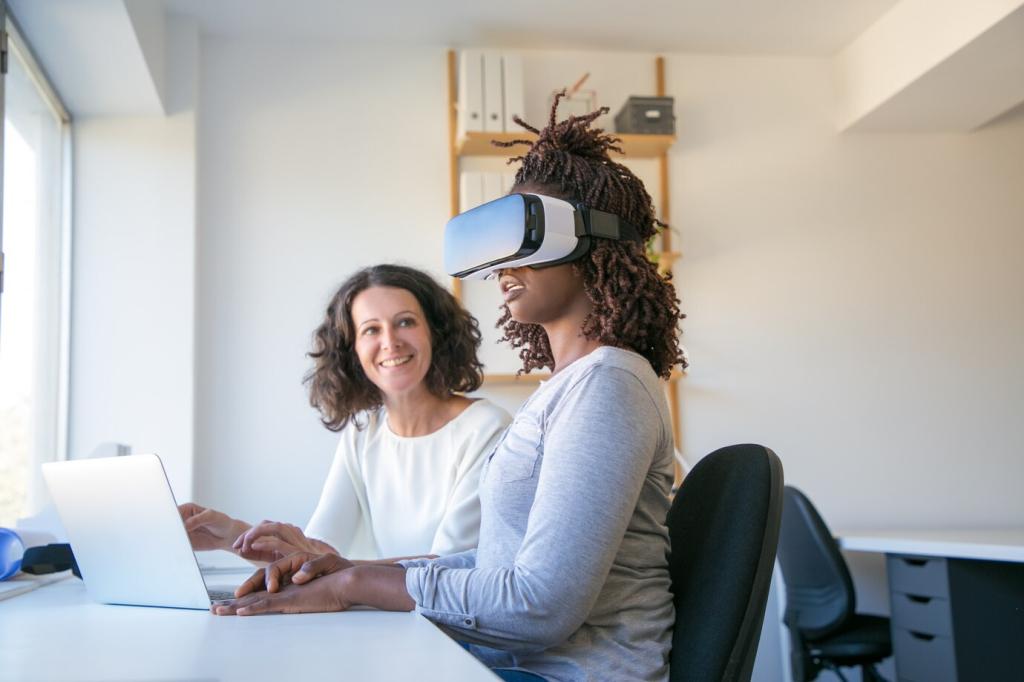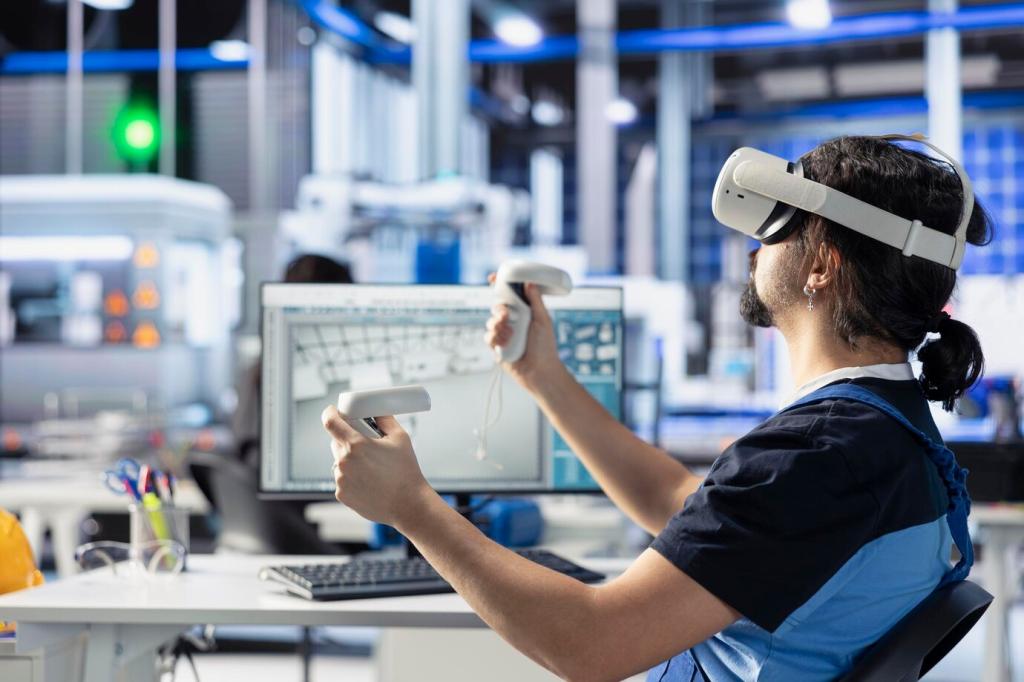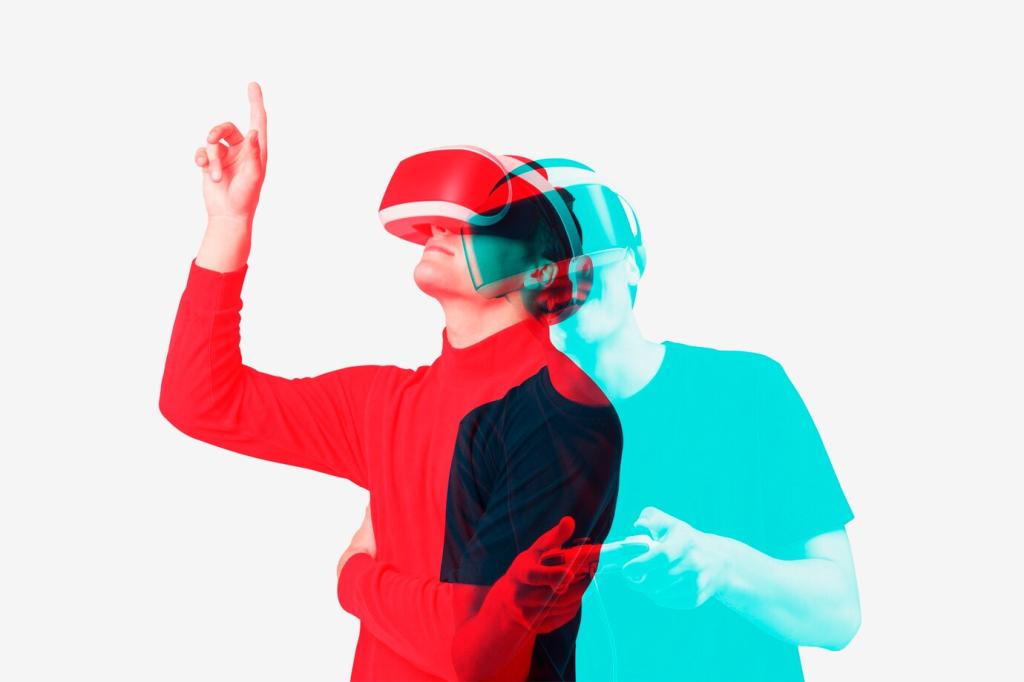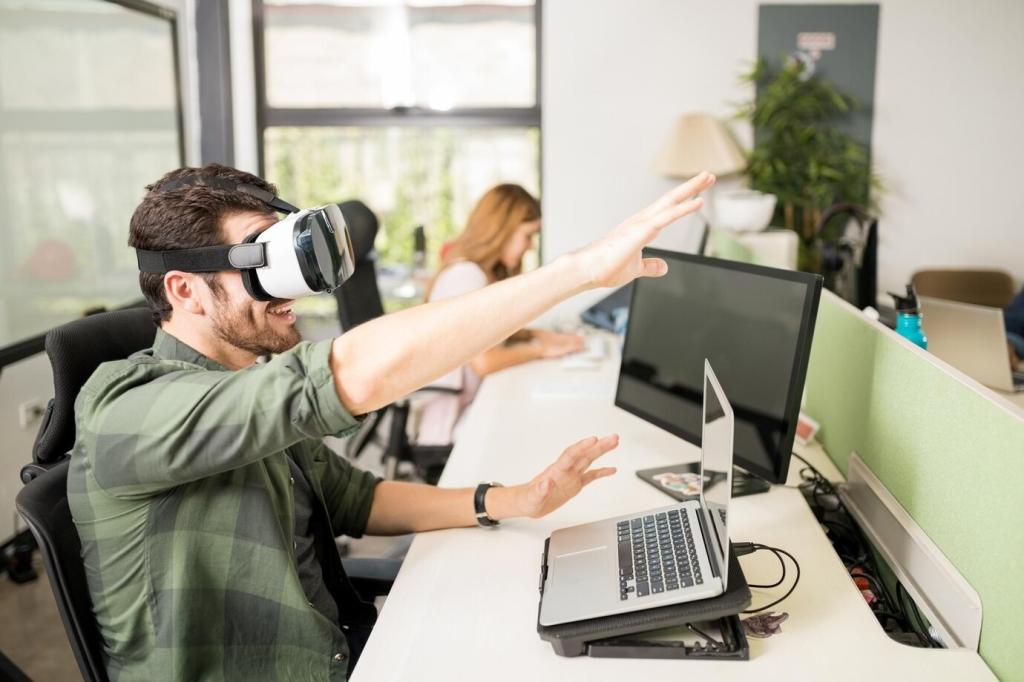Inputs and Modalities: Hands, Controllers, Eyes, and Voice
Use hands for direct manipulation, controllers for precision, eyes for targeting, and voice for low‑friction commands. Blend modalities carefully; for instance, eyes select, a pinch confirms, and audio feedback reassures.
Inputs and Modalities: Hands, Controllers, Eyes, and Voice
Design around human limits: minimize arm‑up time, provide seated options, and support left‑handed mirroring. Offer larger hit zones, dwell‑based selection, and configurable controls so more people can participate comfortably.




